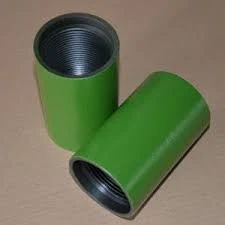- Afrikaans
- Albanian
- Amharic
- Arabic
- Armenian
- Azerbaijani
- Basque
- Belarusian
- Bengali
- Bosnian
- Bulgarian
- Catalan
- Cebuano
- Corsican
- Croatian
- Czech
- Danish
- Dutch
- English
- Esperanto
- Estonian
- Finnish
- French
- Frisian
- Galician
- Georgian
- German
- Greek
- Gujarati
- Haitian Creole
- hausa
- hawaiian
- Hebrew
- Hindi
- Miao
- Hungarian
- Icelandic
- igbo
- Indonesian
- irish
- Italian
- Japanese
- Javanese
- Kannada
- kazakh
- Khmer
- Rwandese
- Korean
- Kurdish
- Kyrgyz
- Lao
- Latin
- Latvian
- Lithuanian
- Luxembourgish
- Macedonian
- Malgashi
- Malay
- Malayalam
- Maltese
- Maori
- Marathi
- Mongolian
- Myanmar
- Nepali
- Norwegian
- Norwegian
- Occitan
- Pashto
- Persian
- Polish
- Portuguese
- Punjabi
- Romanian
- Russian
- Samoan
- Scottish Gaelic
- Serbian
- Sesotho
- Shona
- Sindhi
- Sinhala
- Slovak
- Slovenian
- Somali
- Spanish
- Sundanese
- Swahili
- Swedish
- Tagalog
- Tajik
- Tamil
- Tatar
- Telugu
- Thai
- Turkish
- Turkmen
- Ukrainian
- Urdu
- Uighur
- Uzbek
- Vietnamese
- Welsh
- Bantu
- Yiddish
- Yoruba
- Zulu
Designing Efficient Layouts for Bull Plug Pipe Systems in Industrial Applications
Understanding Bull Plug Pipe Layouts in Industrial Applications
In industrial piping systems, the configuration and layout of pipes are critical for ensuring efficient flow, maintaining pressure, and facilitating maintenance and inspection. One important layout term that professionals encounter is the bull plug, which plays a significant role in specific piping arrangements.
What is a Bull Plug?
A bull plug is a type of pipe fitting that has a rounded end and is used to seal the end of a pipe. It is particularly useful in situations where a permanent closure is needed, or where the pipe is not intended to be modified or extended. The bull plug is typically utilized in conjunction with various piping materials, including steel, PVC, and cast iron, depending on the requirements of the system.
Applications of Bull Plugs
Bull plugs are widely used in various sectors, including oil and gas, water treatment, and chemical processing
. They are particularly advantageous in the following scenarios1. Pressure Maintenance In piping systems where maintaining pressure is crucial, bull plugs can effectively seal off lines that are not in use, preventing any loss of pressure that may lead to inefficient operations or safety hazards.
2. System Isolation For maintenance purposes, isolating a section of a piping system is often necessary. Bull plugs can be used to completely close off a pipe segment, making it safer for technicians to work on adjacent sections without the worry of accidental leaks or bursts.
3. System Modifications When retrofitting or modifying existing piping systems, bull plugs can provide a means to cap off unwanted or redundant connections, enabling a streamlined and efficient layout.
bull plug pipe layout

Designing a Bull Plug Pipe Layout
When designing a piping layout that incorporates bull plugs, several considerations should be addressed
1. Pipe Size and Pressure Ratings It is important to select the appropriate size of bull plugs that match the diameters of pipes being used. Additionally, ensure that the pressure rating of the bull plug fits within the maximum operating pressure of the piping system to avoid any mechanical failures.
2. Material Compatibility Selecting the correct material for the bull plug is essential to prevent corrosion or chemical reactions that could compromise the integrity of the closure. The material should be compatible with the fluids being transported through the piping system.
3. Accessibility for Maintenance Bull plugs should be placed in locations that allow for easy access in case of future maintenance needs. Proper placing of these fittings can minimize downtime and facilitate quicker repairs or inspections.
4. Regulatory Compliance Various industries have specific codes and regulations governing the use of pipe fittings. Ensuring that the chosen bull plug and its installation adhere to these regulations is vital for the safety and legality of the piping system.
Conclusion
The bull plug is a deceptively simple yet highly functional component of piping systems. Its utility in sealing pipes not only ensures safety and efficiency but also aids in the overall longevity and reliability of industrial systems. By carefully considering the design and layout of bull plugs within a piping framework, engineers and technicians can enhance system performance, facilitate maintenance, and adhere to safety standards, creating a well-functioning and compliant piping network.
In summary, a proper understanding of bull plugs and their application in pipe layouts is essential for any professional involved in pipeline design and maintenance. Such expertise not only contributes to the efficiency of industrial processes but also promotes a safe working environment.
-
Tubing Pup Joints: Essential Components for Oil and Gas OperationsNewsJul.10,2025
-
Pup Joints: Essential Components for Reliable Drilling OperationsNewsJul.10,2025
-
Pipe Couplings: Connecting Your World EfficientlyNewsJul.10,2025
-
Mastering Oilfield Operations with Quality Tubing and CasingNewsJul.10,2025
-
High-Quality Casing Couplings for Every NeedNewsJul.10,2025
-
Boost Your Drilling Efficiency with Premium Crossover Tools & Seating NipplesNewsJul.10,2025







